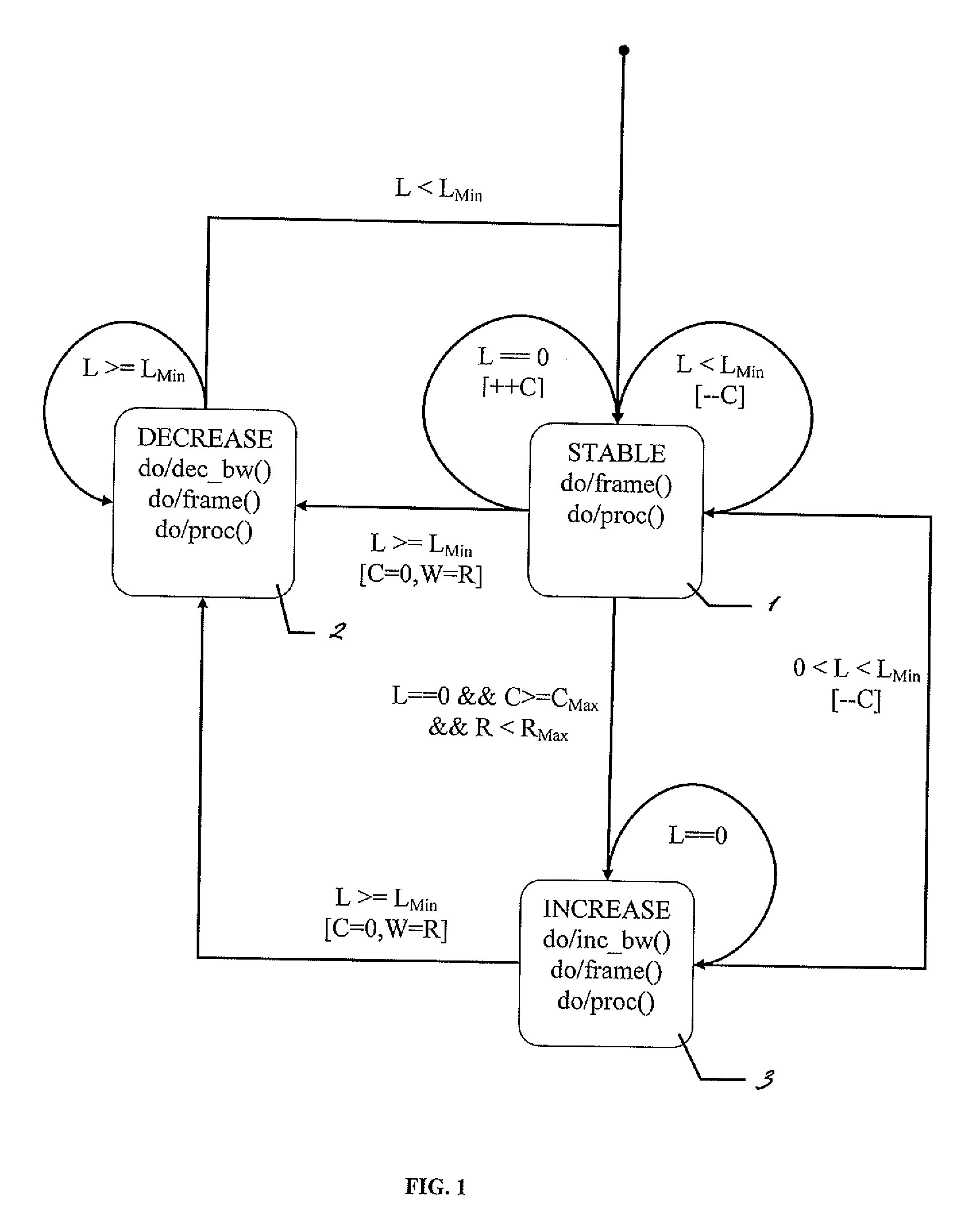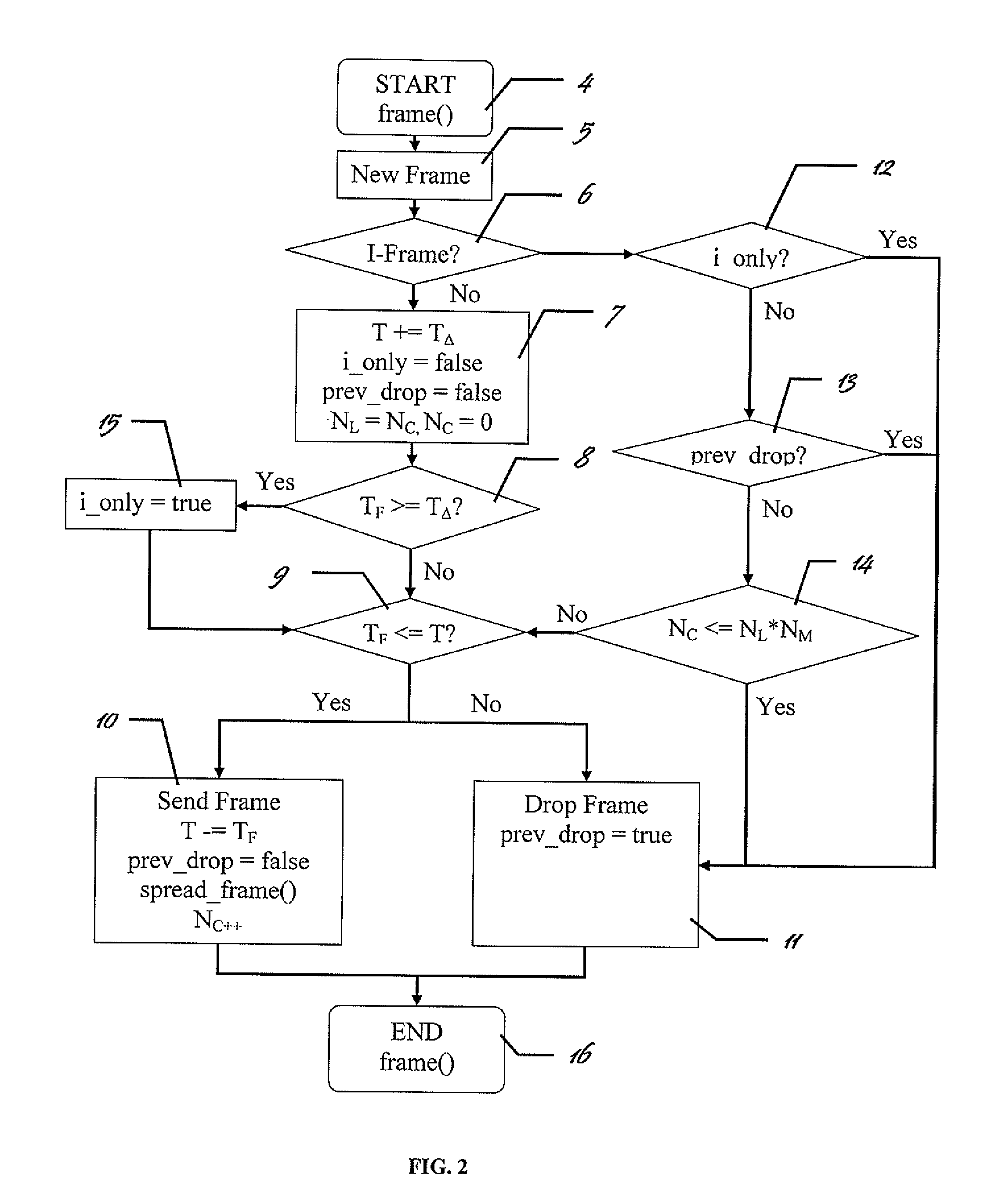Adaptive frame rate control for video in a resource limited system
a resource-limited, frame rate-controlled technology, applied in transmission systems, transmission systems, television systems, etc., can solve the problems of loss or delay of digital content being transmitted, reduced available bandwidth, degraded rendering at the receiving end, etc., to reduce the degradation of rendering on the receiving end and the perceived quality of the end user, and alleviate the effect of bursting packets
- Summary
- Abstract
- Description
- Claims
- Application Information
AI Technical Summary
Benefits of technology
Problems solved by technology
Method used
Image
Examples
Embodiment Construction
[0099]Turning to the overview of the system shown in FIG. 8, the is shown a method of transmitting video signals and receiving video signals on a packet switched network. The apparatus for carrying out this method includes a transmitting station 100 providing a video source 101 for supplying uncompressed video frames, a video encoder 102 to compress said video frames, and a stream 105 of packetized compressed video frames for transmission at a transmitter 103 over a packet switched network 111.
[0100]The apparatus for carrying out this method further includes a receiving station 107 receiving the compressed packetized video frames 105 at the receiver 110 and including a parsing and decoding module 109 that supplies a decoded video signal to a display 108. The receiver 110 is also responsible for periodically calculating and sending statistics reports of packet characteristics of the received video frames back to the transmitter through a dedicated network connection 106. The above sy...
PUM
 Login to View More
Login to View More Abstract
Description
Claims
Application Information
 Login to View More
Login to View More - R&D
- Intellectual Property
- Life Sciences
- Materials
- Tech Scout
- Unparalleled Data Quality
- Higher Quality Content
- 60% Fewer Hallucinations
Browse by: Latest US Patents, China's latest patents, Technical Efficacy Thesaurus, Application Domain, Technology Topic, Popular Technical Reports.
© 2025 PatSnap. All rights reserved.Legal|Privacy policy|Modern Slavery Act Transparency Statement|Sitemap|About US| Contact US: help@patsnap.com



